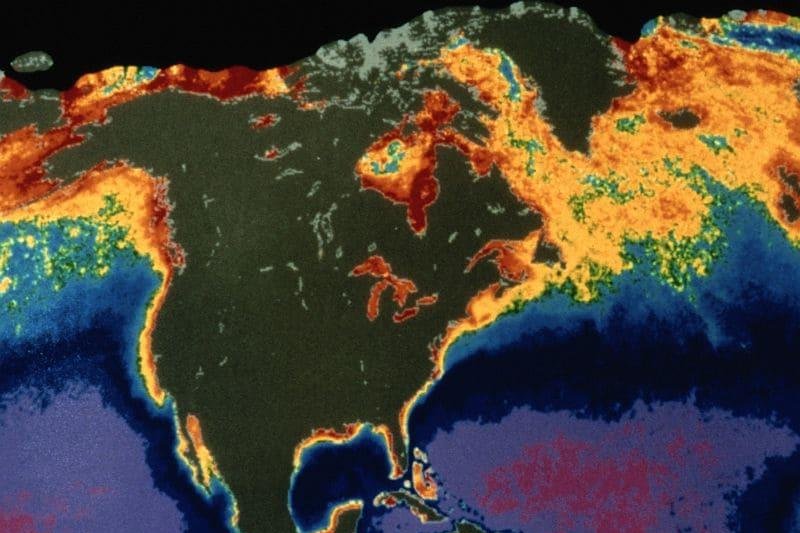Climate Change And The Rise Of Internal Fungus Infections

Table of Contents
The Impact of Climate Change on Fungal Growth
Rising Temperatures and Humidity
Increased temperatures and humidity create ideal breeding grounds for fungal spores. These conditions allow for rapid germination, growth, and dispersal, leading to a higher concentration of fungal spores in the environment. This translates to a greater chance of human exposure and subsequent infection.
- Specific Fungi Thriving in Warmer Climates: Species like Aspergillus fumigatus, a common cause of aspergillosis, and various Candida species, responsible for candidiasis, are thriving in warmer, wetter conditions.
- Geographic Regions Most Affected: Tropical and subtropical regions are experiencing the most significant increases in fungal infections, but temperate zones are also seeing a rise in cases as climate change alters local weather patterns.
- Increased Fungal Spore Counts: Studies have documented a significant increase in airborne fungal spore counts in many regions due to climate change, directly correlating with higher temperatures and humidity levels.
Changes in Geographic Distribution
Climate change is reshaping the geographic distribution of fungi, allowing them to spread to new territories. Fungi that were previously confined to specific regions are now expanding their range, exposing new populations to potentially deadly internal fungal infections.
- Examples of Expanding Fungi: The northward expansion of Coccidioides, causing coccidioidomycosis (valley fever), is a prime example. This fungus is increasingly found in areas previously considered too cold for its survival.
- Implications for Public Health Infrastructure: The spread of fungi to new areas puts a strain on public health infrastructure in those regions, which may lack the resources and expertise to effectively diagnose and treat these infections.
Weakened Immune Systems
Climate change-related stressors further exacerbate the problem. Extreme weather events, food insecurity, and malnutrition weaken immune systems, leaving individuals more vulnerable to fungal infections, including severe internal fungal infections.
- Malnutrition and Fungal Infections: Malnutrition compromises the body's ability to fight off infections, making individuals more susceptible to opportunistic fungal pathogens.
- Impact of Heat Stress on Immune Function: Extreme heat can suppress immune responses, increasing the risk of severe infections, including invasive fungal infections.
Types of Internal Fungus Infections on the Rise
Opportunistic Infections
Opportunistic fungal infections, caused by fungi that normally don't cause disease in healthy individuals, are becoming increasingly prevalent due to climate change. These fungi take advantage of weakened immune systems.
- Aspergillus: Aspergillus fumigatus can cause invasive aspergillosis, a serious lung infection, often fatal in immunocompromised individuals.
- Candida: Various Candida species cause candidiasis, which can manifest as superficial infections or, in severe cases, invasive candidiasis affecting internal organs.
- Cryptococcus: Cryptococcus neoformans causes cryptococcosis, a life-threatening infection primarily affecting the lungs and central nervous system.
Emerging Fungal Pathogens
New fungal pathogens, adapted to warmer and more humid climates, pose an even greater threat. These emerging pathogens may be more virulent or resistant to existing antifungal treatments.
- Examples of Emerging Pathogens: Research continues to identify newly emerging fungal pathogens that are better adapted to changing environmental conditions, posing significant challenges for global health security.
- Mortality Rates: Mortality rates associated with invasive fungal infections remain high, particularly in immunocompromised individuals, highlighting the urgency of addressing this growing public health problem.
Combating the Rise of Internal Fungus Infections
Public Health Measures
Improved surveillance, early detection, and rapid diagnosis are crucial for effectively managing the increasing number of fungal infections.
- Strategies for Early Detection and Prevention: Public health initiatives focusing on education, early diagnosis, and prompt treatment are paramount.
- Role of Healthcare Professionals: Training healthcare professionals to recognize the symptoms of invasive fungal infections and utilize rapid diagnostic tests is vital for early intervention.
Developing New Antifungal Treatments
The emergence of drug-resistant fungal strains necessitates the development of new antifungal drugs and therapies.
- Ongoing Research Efforts: Research into new antifungal agents and strategies to combat drug resistance is crucial to addressing this emerging health threat.
- Challenges in Developing Effective Antifungals: Developing effective antifungals is challenging due to the complexities of fungal biology and the inherent difficulties in targeting fungal cells without harming human cells.
Mitigation of Climate Change
Addressing climate change is essential for reducing the long-term risk of fungal infections. Mitigation efforts are vital to curb the expansion and virulence of these pathogens.
- Sustainable Practices and Policies: Implementing sustainable practices and policies to reduce greenhouse gas emissions is essential to mitigating climate change and its impact on fungal growth. This includes transitioning to renewable energy sources and adopting sustainable agricultural practices.
Conclusion
The link between climate change and the increasing prevalence of internal fungus infections is undeniable. Rising temperatures and humidity are creating favorable conditions for fungal growth and expansion, while climate change-related stressors weaken immune systems, leaving individuals more vulnerable. The emergence of new fungal pathogens and drug-resistant strains further exacerbates the problem. To combat this growing threat, we need proactive measures, including improved public health surveillance, the development of new antifungal treatments, and, critically, significant mitigation of climate change. We must actively work towards preventing the spread of internal fungal infections and reducing the risk of climate change-driven fungal infections to safeguard global health. Support research efforts, advocate for climate-friendly policies, and learn more about fungal infections to contribute to this vital global effort.

Featured Posts
-
 As Monaco La Composition De L Equipe Contre Nice
May 26, 2025
As Monaco La Composition De L Equipe Contre Nice
May 26, 2025 -
 Akses Live Streaming Moto Gp Inggris 2025 Sprint Race 20 00 Wib
May 26, 2025
Akses Live Streaming Moto Gp Inggris 2025 Sprint Race 20 00 Wib
May 26, 2025 -
 Pourquoi Ne Faut Il Pas Debloquer La Rtbf
May 26, 2025
Pourquoi Ne Faut Il Pas Debloquer La Rtbf
May 26, 2025 -
 Louisiana Horror Film Sinners Set For Theatrical Release
May 26, 2025
Louisiana Horror Film Sinners Set For Theatrical Release
May 26, 2025 -
 The Truth About Elon Musks Dogecoin Investments
May 26, 2025
The Truth About Elon Musks Dogecoin Investments
May 26, 2025
